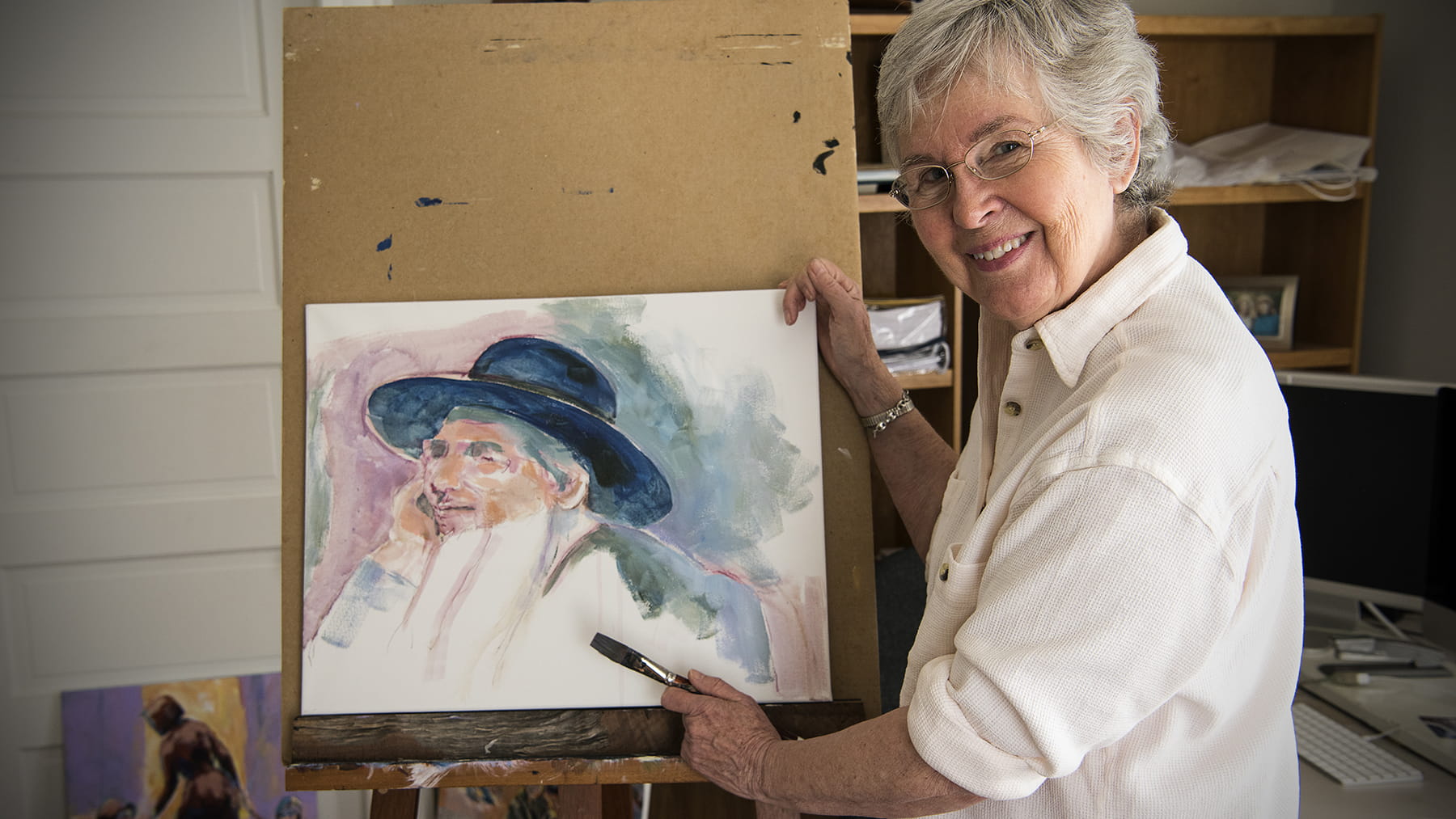Deep Brain Stimulation allows artist to create again

Judy Miller contemplates a canvas in her home art studio in Gambier, Ohio. She spreads acrylic paint with a brush in her left hand. The face of an Amish man begins to take shape.
Art has always been a part of Miller’s life, from grade school through college and to this day.“I love painting,” says Miller, 76. “It’s my way of preserving a moment in time.”Her ability to create artwork was tested more than a decade ago when her left hand began to shake. It continued to shake for years, growing worse with each passing day until she could no longer hold a pen to sign her name.
Miller saw a primary care doctor about her condition, called an essential tremor. She tried medications to reduce her shaking, but those didn’t help. The medicine also left her tired and feeling off balance.
Miller’s doctor referred her to neurology specialists at The Ohio State University Wexner Medical Center, including neurologist and movement disorder specialist Barbara Changizi, MD, and neurosurgeon Milind Deogaonkar, MBBS.
Treating tremors with Deep Brain Stimulation
Ohio State specialists use a low-risk, neurosurgical procedure called Deep Brain Stimulation – or DBS – to treat neurological conditions including essential tremor, as well as Parkinson’s disease and epilepsy, when medications don’t work.
The procedure involves implanting a pacemaker in an area of the brain called the thalamus. The pacemaker produces electrical impulses that regulate abnormal impulses that cause tremors. Since DBS was approved by the U.S. Food and Drug Administration in 2002, more than 130,000 patients have undergone the procedure, according to the medical device company Medtronic.
“It’s a very safe, effective procedure that can be life-altering,” says Dr. Changizi, who programed Miller’s DBS device. “With a good candidate, a good surgeon and a well-programmed device, you can eliminate shaking indefinitely.”
Miller was a good candidate for the procedure, Dr. Changizi explains, because her tremors affected her livelihood, and medications didn’t work.“I was not at all hesitant to have the surgery,” says Miller, recalling the year of her surgery in 2015. “I thought the possible outcome was so much better than not having it.”
During surgery, Dr. Deogaonkar drilled a hole through Miller’s skull and inserted a wire into her thalamus. Miller was awake for key parts of the three-hour operation. A team monitored her brain activity while she performed simple tasks with her hand. When Miller’s tremors stopped, her doctor knew he had pinpointed the right spot in her brain to implant the pacemaker.
“The target range is only several millimeters in size,” Dr. Changizi says. “You need an experienced surgeon who’s specifically trained in DBS, has a fellowship in stereotactic neurosurgery and has done a number of cases. Our neurosurgeons are highly experienced, having performed this operation on more than 1,000 patients apiece.”
Miller’s pacemaker was connected to an extension cable that runs under her skin and down her neck to a battery pack that’s in her chest. After surgery, Miller remained in the hospital for two days.Two weeks later, she had a second surgery to install the batteries into the device in her chest. The batteries provide power to generate the impulses that control the shaking. “At that moment, she experiences the effects,” Dr. Changizi says. “For something like essential tremor, the effects are immediate.”
Follow-up appointments continued for three months to closely monitor Miller’s device. She’s been able to continue painting every day.
“This has made such a huge improvement. I am just so grateful. This just really made my artwork possible again.”




